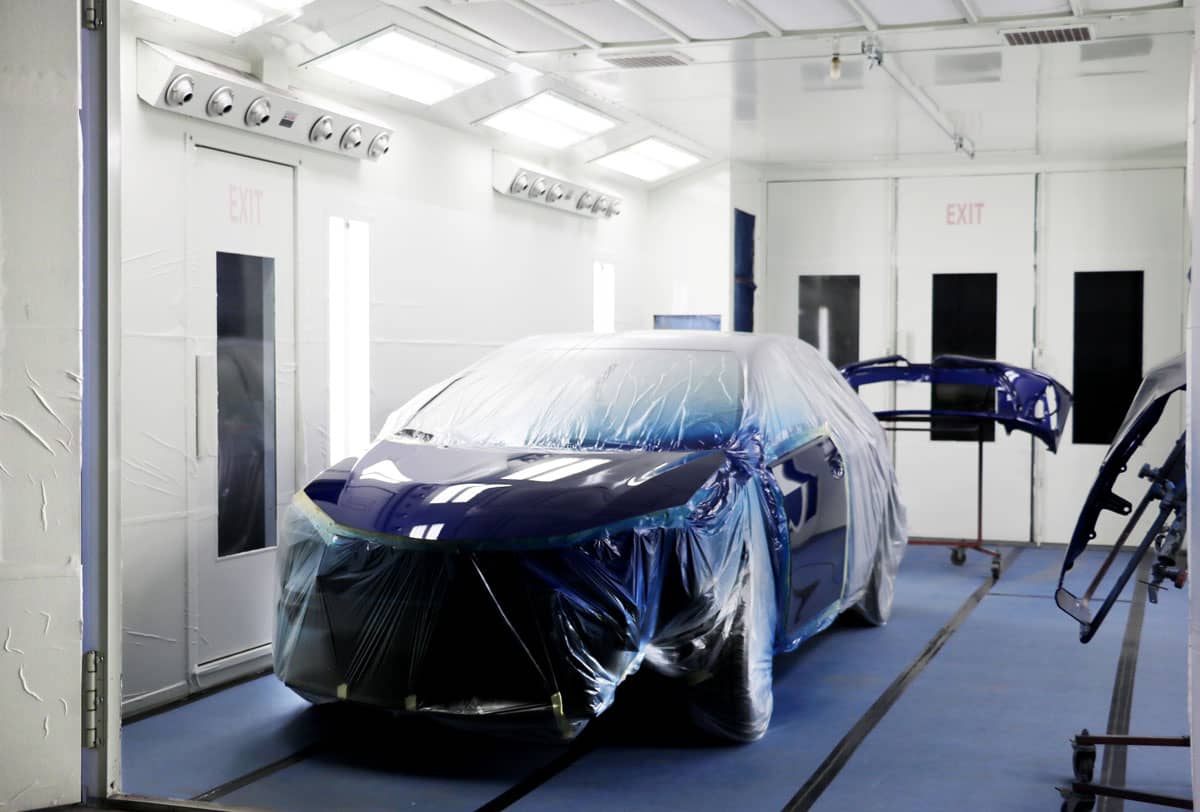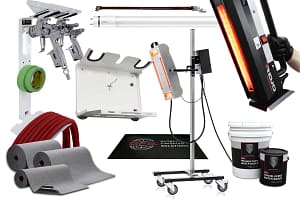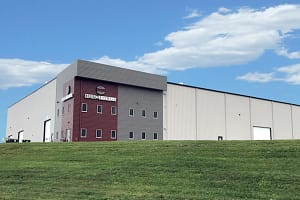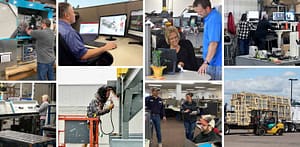
With a shortage of OEM-certified body shops, OEMs, such as Honda, have begun opening their certification programs to independent body shops. Previously, only dealership body shops were eligible for Honda certification. OEM certification means an OEM has verified that a body shop has the correct equipment to repair their vehicles, using only factory-approved procedures and installing only factory-approved parts.
If your automotive body shop is attempting to obtain OEM certification, there is likely a long list of requirements, such as this audit form from American Honda Motor Co. One item on the list that is often overlooked is the importance of high-quality lighting, as better visibility in your shop will help you produce a better finish and avoid costly rework, as well as give a better impression and assurance to customers.
Upgrading lighting is not nearly as expensive as it was years ago, with LED lights now more affordable and even more efficient. Some states and counties also offer rebates and tax credits on LED lighting, lowering the upfront costs for a business.
“Lighting is a very simple and easy thing to correct or upgrade in your shop,” said Jason Garfoot, senior technical advisor for Global Finishing Solutions (GFS). “Body shops can benefit by taking the time to make sure their lights are the correct brightness. If you can’t see what you’re doing when making a repair, how do you know you’re doing it right? It is also easier to see secondary damage that could be missed with poor lighting.”
Before applying for OEM certification, a body shop should measure the lighting in all areas of its shop using a light meter 3 feet above the ground. Foot-candles — the intensity of light in a given direction — are used to measure a paint booth’s brightness; lux is the measurement Honda uses (1 lux equals 0.09 foot-candles).
The minimum paint booth lighting requirements for Honda’s certification program are 93 foot-candles for a paint booth; 70 foot-candles for a paint mix room and the detail area; and 42 foot-candles for the general metalworking area.
Lighting in GFS equipment far exceeds the minimum requirements for Honda certification. In tests conducted by GFS, the lowest readings were 173 foot-candles in the Ultra Paint Booth, 186 foot-candles in the working area of the Closed-Top Open-Front (CTOF) Booth and 102 foot-candles in the Ultra XD Mix Room.
Here is why having adequate lighting matters in each area of your shop:
Technicians need to be able to see what they are painting to prevent the need for rework, which is often the biggest expense for a shop. Rework requires additional labor, which means it takes longer to get a repaired vehicle back to a customer. This negatively affects a shop’s cycle time.
Secondary damage that was missed often requires a sublet from an insurance company — approval to perform additional repairs. The number of sublets by a shop factors into its grading from insurance companies, who frown upon shops not performing work correctly the first time.
Detail areas in shops have traditionally not been well kept. But now that customers and insurance adjusters are in the detail area more often, shops are starting to make their detail area more presentable, to resemble a storefront.
“You want the detail area to be clean and neat, so that it is more appealing to customers and so you can see any imperfections in your repair work,” Garfoot said. “It is also good to have a well-lit area, so that when you pre-wash a car, you can see any secondary damage that you may have missed.”
Proper lighting in a paint mix room allows painters to better spot possible color shifts in paint. Color shifts are most common with specialty toners, which are not used frequently. If the paint has been stirring on the mixing machine for an extended period of time, it can become more concentrated, resulting in a significant color shift.
“That is something that is easier to catch when you have the proper brightness in your mix room,” Garfoot said. “If you are pouring that paint, and it is supposed to be medium-strength red, and it looks like a super-rich red, you know something is wrong. That can be missed if the lighting in your mix room is not up to standard.”
Good mix room lighting is also essential for reading tinting charts. For instance, if you are painting a silver, and it looks too yellow, the tinting chart will tell you which shade of blue toner to add to make your paint the desired color.
“Having the clearest, cleanest image possible to know which toner to grab shortens the time it takes to perform color adjustments,” Garfoot said. “Insurance companies typically pay body shops only half an hour for a color adjustment. If it takes them two hours to adjust the color, they are going to lose money.”
The prep area is the final inspection point before a vehicle is painted. With quick lanes rapidly becoming more popular in body shops, small repairs of four panels or less are now being performed in prep areas.
“It is important to make sure the prep area is just as well-lit as the paint booth,” Garfoot said.
Evaluating the quality of the lighting in your body shop is a must if your shop is aiming for OEM certification. Lighting upgrades are more affordable than ever, and adequate lighting that produces better finishes and helps you avoid costly rework can greatly benefit your shop. GFS can help your shop obtain OEM certification, ensuring your shop meets minimum requirements for lighting and other equipment specifications.
In addition to paint booth lighting, GFS offers high bay fluorescent lights for the rest of your body shop. High bay lights from GFS are an energy-efficient alternative to metal halide lights and T-12 light fixtures.
One of the best ways to highlight your business is through a story that you can share across your online platforms. It humanizes your business and shows that your business can make a meaningful impact. Your testimonial would be used as a project profile on the GFS Booth Blog and can be shared on your website and/or social media channels.
Complete this form and we’ll be in touch to showcase your company.

Shop a variety of GFS aftermarket products, including booth protection products and mobile accelerated curing units. And enjoy the convenience of fast and free ground shipping throughout the contiguous United States.

Located at GFS’ headquarters in Osseo, Wisconsin, the Center for Excellence is an innovative facility featuring an automotive refinish training center, as well as a separate space dedicated to technical product training.

GFS is continuously searching for talented, ambitious individuals to join our team. We aim to provide our employees with every opportunity to make an impact on the company and find their niche along the way — weather in a production, field services or an office position.